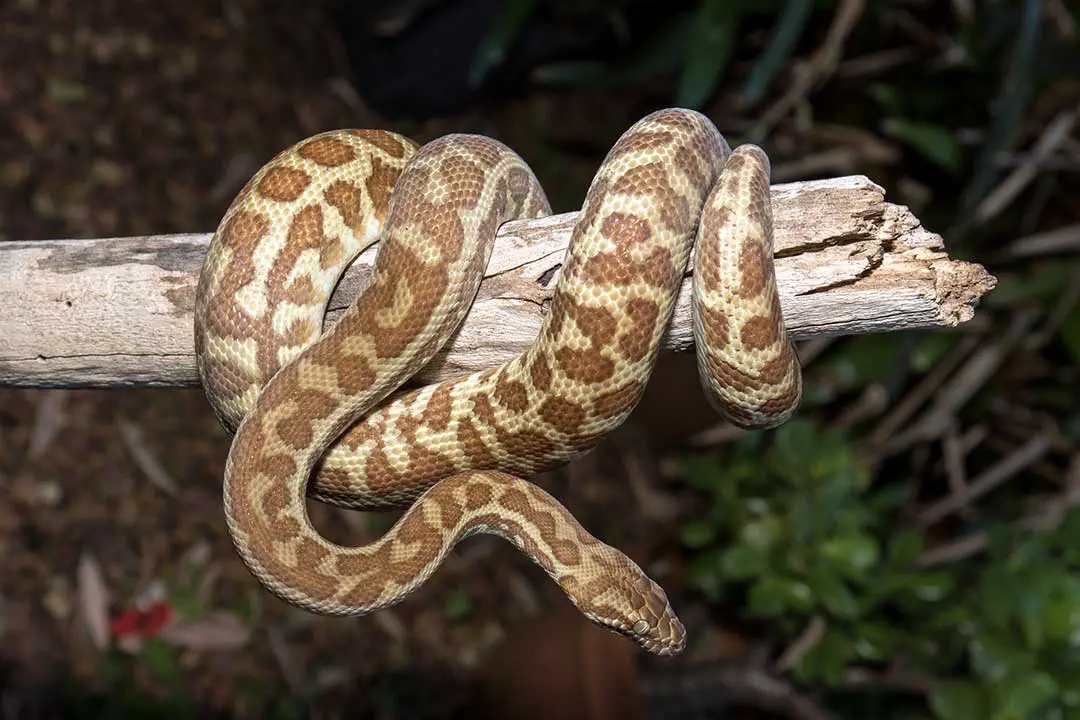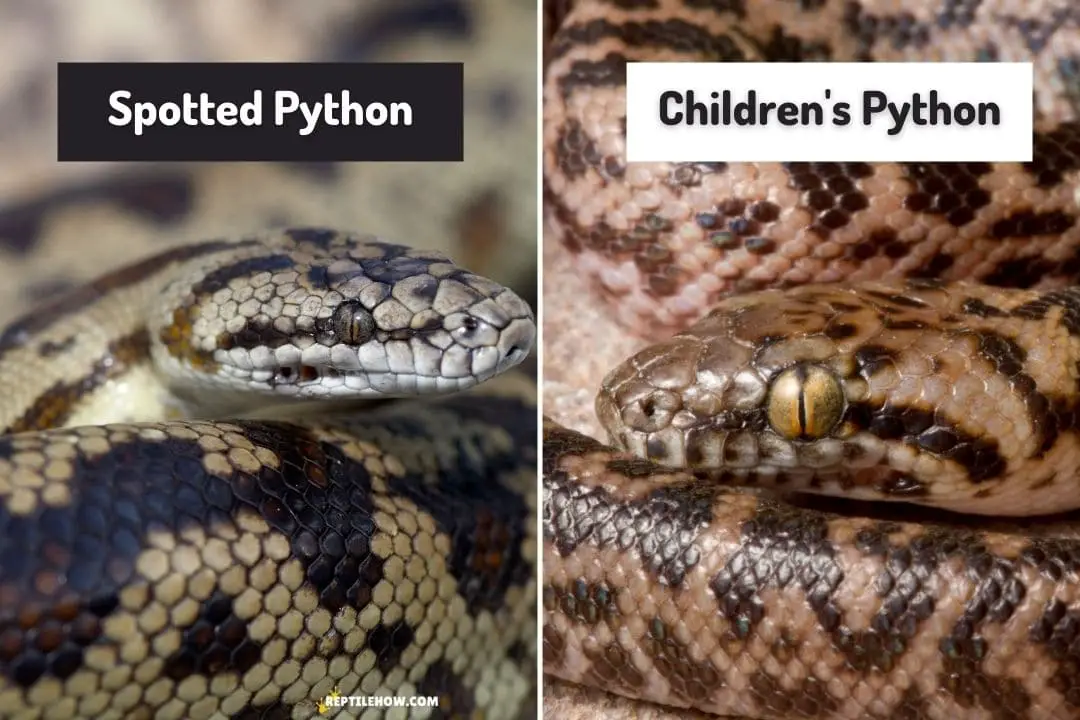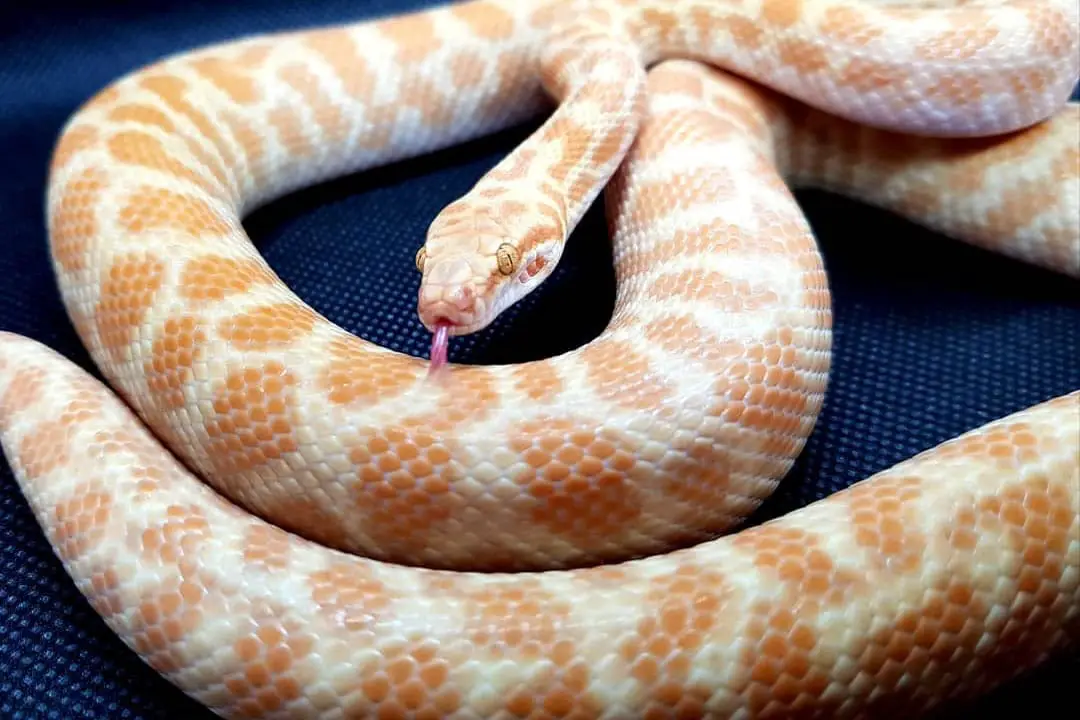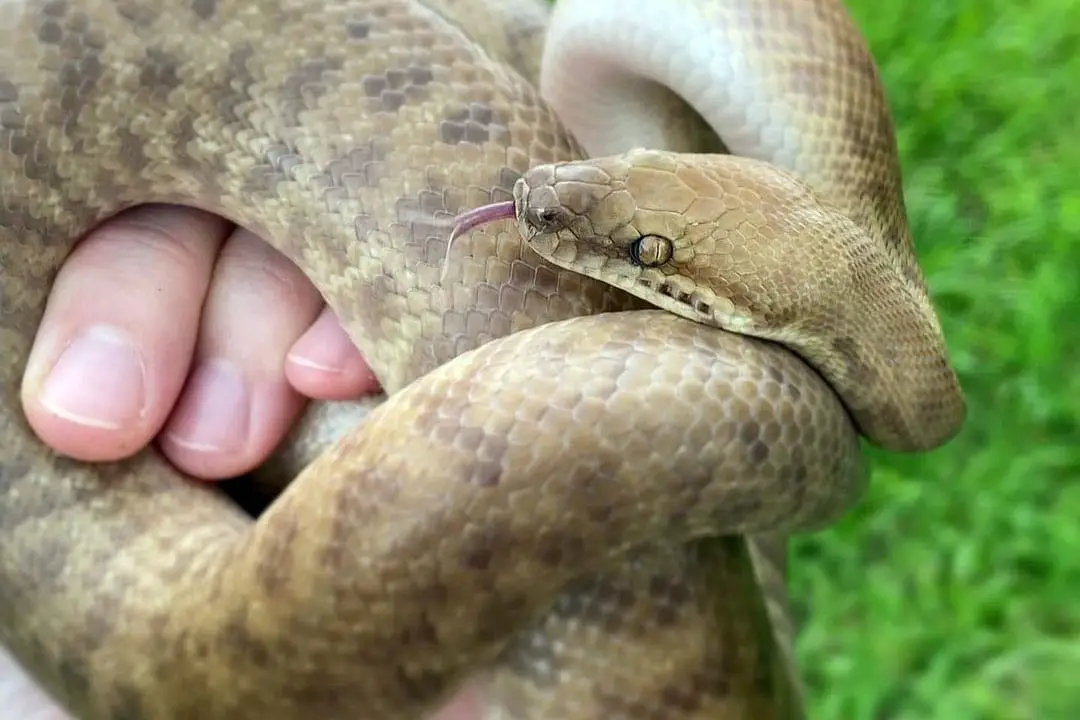The Children’s python (Antaresia childreni) is a small species of non-venomous snake native to Australia. You may be wondering:
Are Children’s Pythons arboreal?
Children’s pythons are considered to be semi-arboreal. They will climb trees in the wild. They are also known for hunting bats by suspending themselves from stalactites in caves.
Habitats

Snakes, like most animals, are typically classified based on where they spend most of their lives. There are snakes that are fully or semi-aquatic.
Some species of garter snake are considered to be in this category, and sea snakes are aquatic.
Terrestrial snakes spend the majority of their life on the ground. Some may dig a bit, but the majority will not create tunnels like a burrowing species will.
Fossorial snakes like the blind snakes live underground and tunnel. Most eat burrowing animals and insects like ants or worms. If an animal is arboreal, that means it lives in the trees.
Some species will vary where on a tree they will live, so some young snakes may live closer to the ground while adults live entirely in the canopy.
Many arboreal snake species will rarely if ever head to the ground.
Some species of snake are considered semi-arboreal. This means they spend at least some time climbing trees looking for shelter and food.
Some species may spend part of their life in the trees like juvenile ball pythons that eat primarily arboreal prey until they get too heavy for most tree branches.
The specifics of this will depend on the exact species of snake, however. In captivity, many keepers use arboreality to describe how likely a captive snake is to climb.
A species described as terrestrial doesn’t typically use climbing surfaces offered. It may even be dangerous for some species if they are not capable of holding onto a branch.
Arboreal species will spend most if not all of their time on a perch. You need to be careful when designing an arboreal enclosure to make sure the snake has access to a temperature gradient and can access the water dish.
Semi-arboreal snakes will use climbing surfaces and the floor of the cage. Individual snakes can have preferences, but the species guideline gives a good starting point. You can tailor an enclosure to the snake as you learn about your pet.
Children’s Pythons
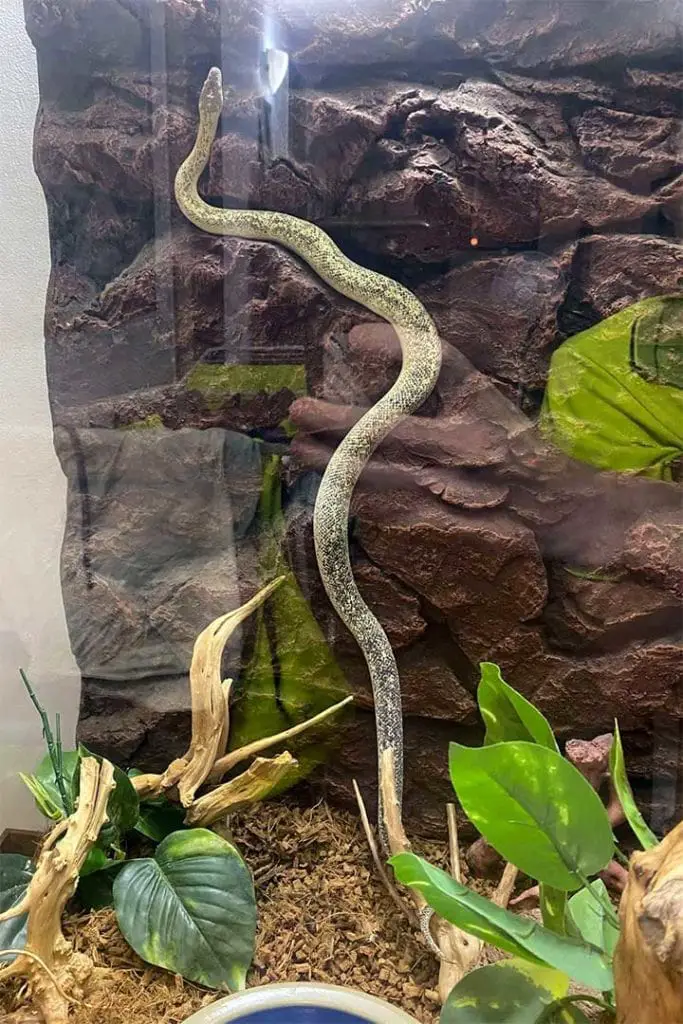
Children’s pythons are interesting snakes. They can eat a wide variety of prey including birds, reptiles, and mammals. They will hunt on the ground, but it isn’t unusual to find them climbing trees for food in their native range.
They are also major predators of bats. They hunt microbats by heading into the caves where the bats roost during the day.
The snake will find an area it can hold onto that is in the flight path of the bats. Most snakes will perch on a stalactite since this is a perch that also helps disguise the snake.
They will wait for the bats to be leaving or coming back and suspend themselves into the flight path. When a bat flies in range, the snake will strike and catch it.
Then, they constrict the bat with its powerful body to cut off the flow of blood. This rapidly kills the prey since its brain is starved of oxygen.
While the old myth is that snakes kill by compressing the lungs or breaking bones, this is not true.
Children’s pythons are considered to be semi-arboreal. They wil take advantage of vertical space to climb. This species should be given some vertical space in captivity.See my complete children’s python care guide for enclosure setup recommendations.
They are active snakes and will happily use all of the space available to them. This means that rack systems or any caging without much height or space is not suitable for this species.
Children’s pythons need an enclosure that offers branches and ledges to climb and rest on. Placing perches throughout the thermal gradient allows the snake to thermoregulate in its choice of location.
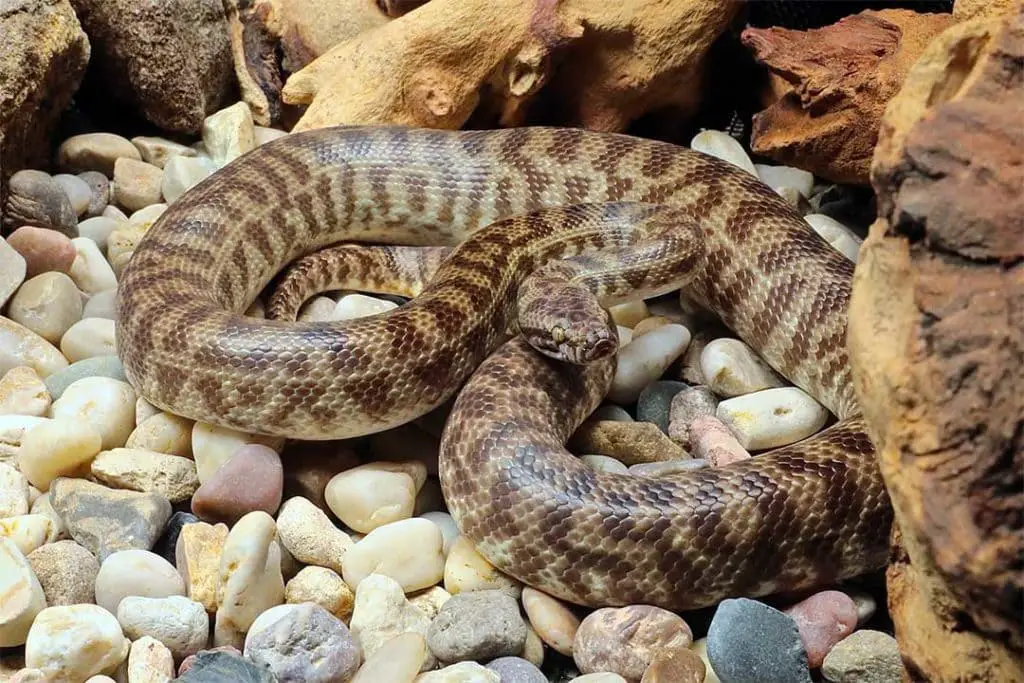
Some individual snakes prefer to hide while others may want to stay on a branch all day. Offering choices is good for the health of the snake.
Since this species are good climbers, they need sturdy perches that will hold the snake. Some animals love hanging out on branches and will spend a good portion of their time there.
Any climbing options should be large enough to hold the snake and secured so it will not wobble or fall on the snake. Loose cage furniture can harm a snake if it lands on them.
These snakes will also crawl all over you during handling sessions. Once the snake learns you are safe, they will likely want to explore.
Many snakes will crawl over their handler as they try to explore any new sights and smells that handling offers them.
They can hang on, but you should still make sure that the snake doesn’t extend too far and risk falling. A fall can hurt your snake and may break the trust you have been building with your pet.
Conclusion
Children’s pythons are semi-arboreal snakes that can hang on very well.
Since they will hunt while hanging from stalactites, they need a good grip. In captivity, they need a number of secure branches and other climbing surfaces that can hold the snake’s weight.
They shouldn’t wobble or be at risk of falling to avoid injuries. If you have any questions or comments, please leave them below.
